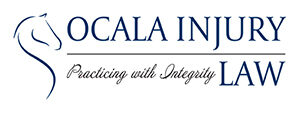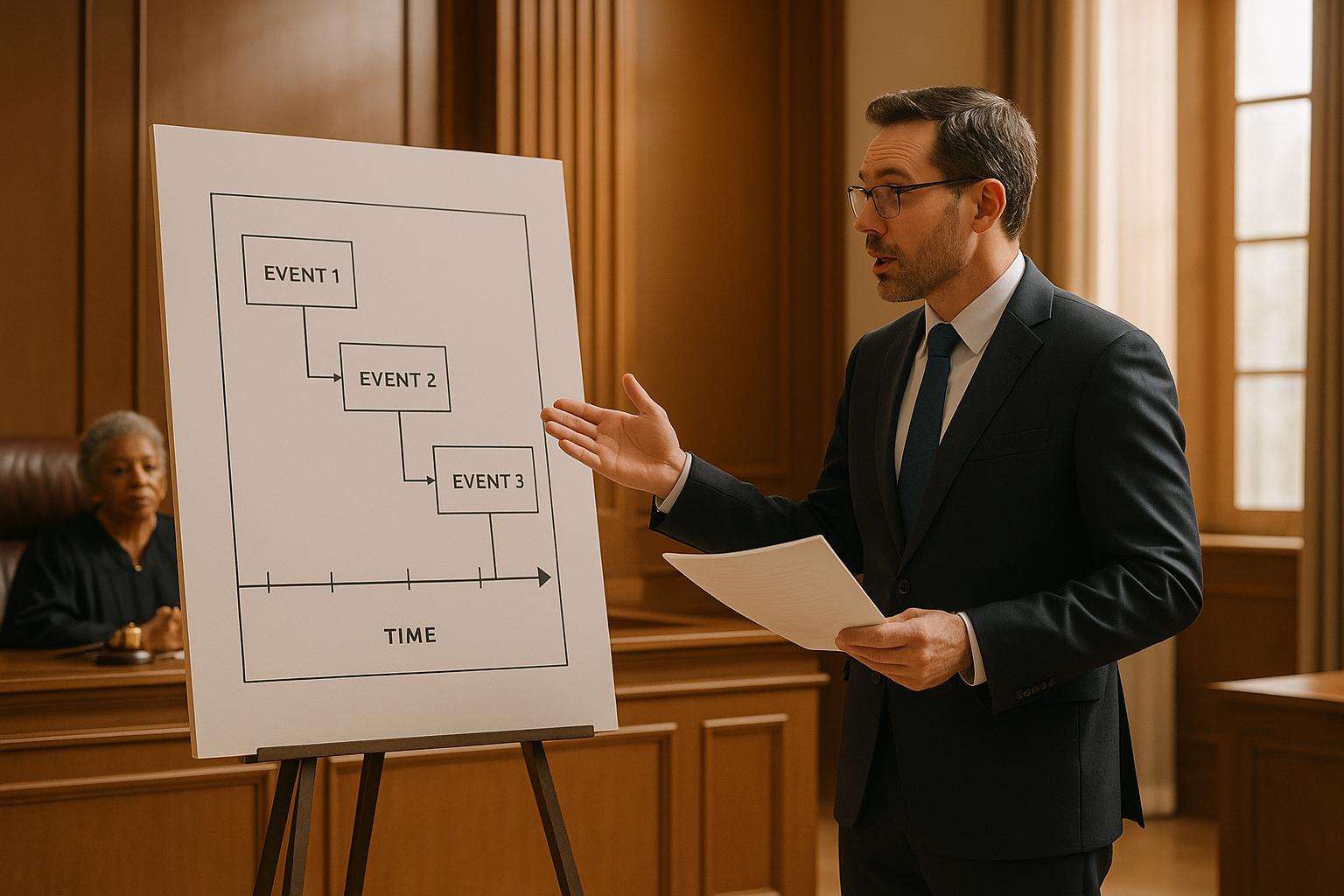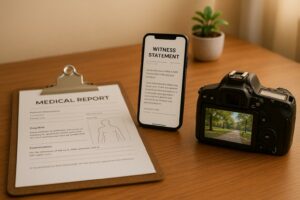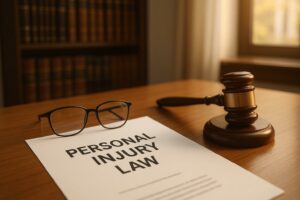Foreseeability in negligence cases is about determining whether a reasonable person could predict harm as a likely result of someone’s actions or inactions. It helps courts decide if a defendant is legally responsible for damages. Key points include:
- Duty of care: Did the defendant have a responsibility to prevent harm?
- Breach of duty: Did they fail to take reasonable precautions?
- Causation: Was the harm a predictable outcome of their actions?
For example, if a property owner ignores a broken handrail despite complaints, and someone gets injured, the harm is likely considered foreseeable. Courts use tests like the "reasonable person" standard to assess foreseeability and define liability.
Defendants may argue harm wasn’t predictable by citing intervening causes or unusual conditions. However, ignoring clear risks often increases legal accountability. Understanding foreseeability is essential in building strong personal injury claims.
Understanding Foreseeability in Negligence Law
What Is Foreseeability?
Foreseeability refers to whether a reasonable person could anticipate harm as a likely outcome of certain actions (or inactions). For example, if a property owner ignores a broken stair railing, it’s reasonable to expect someone might fall and get hurt. This concept plays a key role in determining negligence.
In legal terms, foreseeability helps define the potential risk and establishes the responsibilities individuals or entities have to prevent harm.
Why It Matters in Negligence Cases
Foreseeability is central to negligence claims. It affects three key elements:
- Duty of care: If harm is foreseeable, the defendant likely had a responsibility to prevent it.
- Breach of duty: Failing to take reasonable precautions against predictable harm may constitute a breach.
- Causation: When harm is foreseeable, it strengthens the link between the defendant’s actions (or inactions) and the injury.
At Ocala Injury Law, we emphasize how a clear understanding of foreseeability can shape effective legal strategies in personal injury cases. It’s a critical factor in building strong claims.
Court Methods for Assessing Foreseeability
Courts rely on specific tests to determine whether harm could have been anticipated.
The Average Person Test
This test examines whether a reasonable individual, placed in the same situation, would have anticipated the harm. It helps establish if the defendant’s actions aligned with the expected standard of care.
Applying Foreseeability to Injury Claims
Understanding foreseeability in injury claims helps establish clear boundaries of liability.
Proving Foreseeable Harm
To prove foreseeability, you need to show that the defendant could have reasonably anticipated the risk of harm. This is assessed based on the nature of their actions, the likelihood of harm, and the surrounding circumstances.
Take this example: A property owner ignores repeated complaints about a broken handrail. If someone falls and gets injured, the harm is likely considered foreseeable. The owner had clear warnings and a reasonable chance to fix the issue, making the injury predictable.
Common Defense Strategies
Defendants often argue that the harm caused wasn’t something they could have reasonably predicted. Here are a few common defenses:
- Intervening Causes: Claiming that an unexpected event disrupted the connection between their actions and the injury.
- Remote Consequences: Asserting that the injury was too indirectly linked to their negligence to be considered foreseeable.
- Unusual Conditions: Arguing that the specific harm couldn’t have been anticipated under normal circumstances.
Courts carefully examine the connection between the defendant’s actions and the injury to ensure compensation is limited to harm that could reasonably have been predicted.
If you’re navigating the challenges of proving foreseeable harm in a personal injury case, reach out to Ocala Injury Law for expert guidance and a free consultation.
sbb-itb-68ed374
Effects on Legal Responsibility
Boundaries of Liability
Liability is often shaped by foreseeability, which limits a defendant’s responsibility to harm that a reasonable person could anticipate. This principle helps establish how ignored risks are evaluated in legal cases.
Consequences of Ignoring Known Risks
Disregarding clear hazards not only makes harm predictable but also increases legal accountability. Ignoring such risks can significantly impact the outcome of a case.
If you’re uncertain about how foreseeability applies to your personal injury claim, seeking professional legal advice can help. For tailored assistance, you can contact Ocala Injury Law to schedule a free initial consultation.
Summary and Key Points
Foreseeability plays a crucial role in defining a defendant’s responsibility when harm could be anticipated by an average, reasonable person. This concept helps establish the scope of liability in negligence cases.
To recap, foreseeability is judged using the "reasonable person" standard. Key factors include the likelihood and severity of harm, the practicality of preventing it, and the relationship between the parties involved.
Courts analyze foreseeability by applying established legal standards while considering the unique details of each case. For advice specific to your situation, it’s best to consult an attorney.
Failing to address foreseeable risks often signals negligence, especially when preventive measures were possible. For case-specific guidance, reach out to Ocala Injury Law for a free consultation.
FAQs
What is foreseeability, and how does it affect negligence cases?
Foreseeability refers to whether a reasonable person could predict or expect that certain actions might lead to harm. In negligence cases, it plays a critical role in determining liability. Courts assess if the harm caused was a foreseeable result of the defendant’s actions or inaction.
If the harm was deemed foreseeable, the defendant may be held liable for failing to take reasonable steps to prevent it. However, if the harm was highly unusual or unpredictable, it may not meet the legal standard of foreseeability, potentially limiting liability. This concept is essential in personal injury claims, where proving foreseeability can significantly impact the outcome of a case.
What are some examples of intervening causes that might impact foreseeability in a negligence case?
Intervening causes are events that occur after a defendant’s actions and may contribute to the harm experienced by the plaintiff. These causes can affect foreseeability, which is a key factor in determining liability in negligence cases.
For example, if a driver causes a car accident and, while waiting for help, a third party intentionally damages the vehicle further, the third party’s actions might be considered an intervening cause. Similarly, natural disasters or unexpected criminal acts can sometimes break the chain of causation if they are deemed unforeseeable.
Determining whether an intervening cause impacts foreseeability often requires careful legal analysis. For personalized guidance on your case, consider consulting an experienced personal injury attorney who can help evaluate the specifics of your situation.
Why is the ‘reasonable person’ standard important in determining foreseeability and liability in negligence cases?
The ‘reasonable person’ standard is a key concept in negligence cases because it helps determine whether a person’s actions were foreseeable and reasonable under the circumstances. This standard asks what a hypothetical, sensible person would have done in a similar situation to prevent harm.
If the harm caused by someone’s actions was something a reasonable person could have anticipated and avoided, they may be held liable for negligence. This principle ensures fairness by evaluating behavior objectively rather than based on individual judgment or intent.




